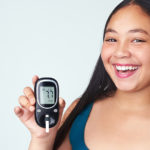A recent survey from the National Institute on Drug Abuse (NIDA) found that even though there’s a downward trend in the use of drugs among teens over the last 5 years, there are misperceptions of the effects of drugs. That’s why it is critical to continue having open conversations – both at home and at school – with teens about the risks associated with taking drugs.
When teens use drugs, there is an overall negative affect on their growth and development, especially on their brains. Drug use will also impact them later on in life by increasing the risk of heart disease, high blood pressure and sleep disorders. This is all in addition to the risk of becoming addicted to the substances that they are using. The earlier in life a person tries a drug, the more likely they are to develop an addiction to it, which is why it is vital that teens understand these risks early on.
Opioid Addiction
Over the last few years there has been a huge increase in the number of opioid overdoes in the United States. According to NIDA, more than 130 people in the United States die each day after overdosing on opioids and in 2017, more than 47,000 Americans died as a result of an overdose. Unfortunately, teens are not immune to this epidemic. According to the US Department of Health & Human Services (HHS), in 2016, 3.6% of adolescents ages 12 to 17 reported misusing opioids within the past year.
In 2015, 4,235 youth aged 15 to 24 died from a drug-related overdose, half of which were a result of opioids. And while death is the most serious result of opioid use, it’s not the only effect. The CDC estimates that for every young adult overdose death, there are 119 emergency room visits and 22 treatment admissions.
What makes an adolescent more likely to misuse opioids? According to HHS:
- Acute and chronic pain
- Physical health problems
- History of mental illness (such as depression)
- History of other substance use or misuse
- History of a family member or friend overdosing
What are the harmful physical effects of opioids? According to NIDA for Teens:
- Sleepiness
- Confusion
- Nausea
- Constipation
- Slowed or stopped breathing
Signs of a possible opioid overdose are:
- Slow breathing
- Blue lips and fingernails
- Cold damp skin
- Shaking
- Vomiting or gurgling noises
Click here to shop for a selection of educational materials and overdose response products. If you have any questions about these products or related items, please contact us.





